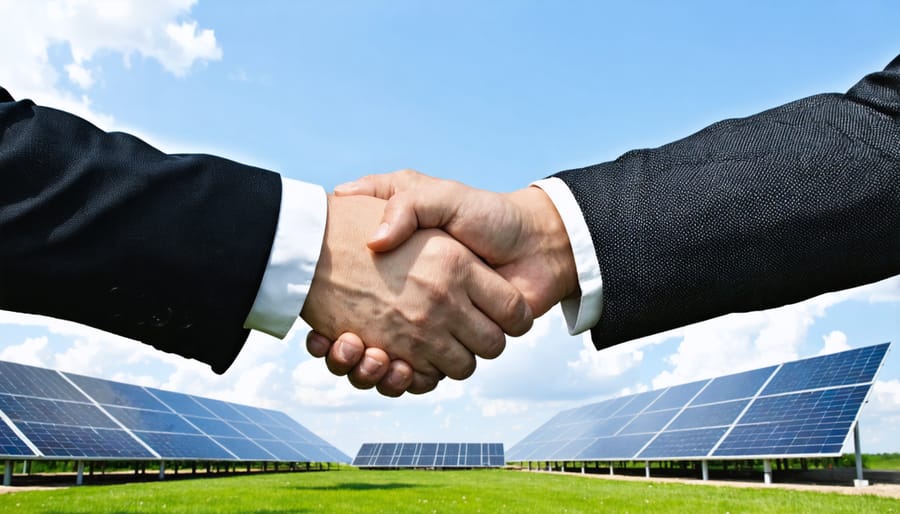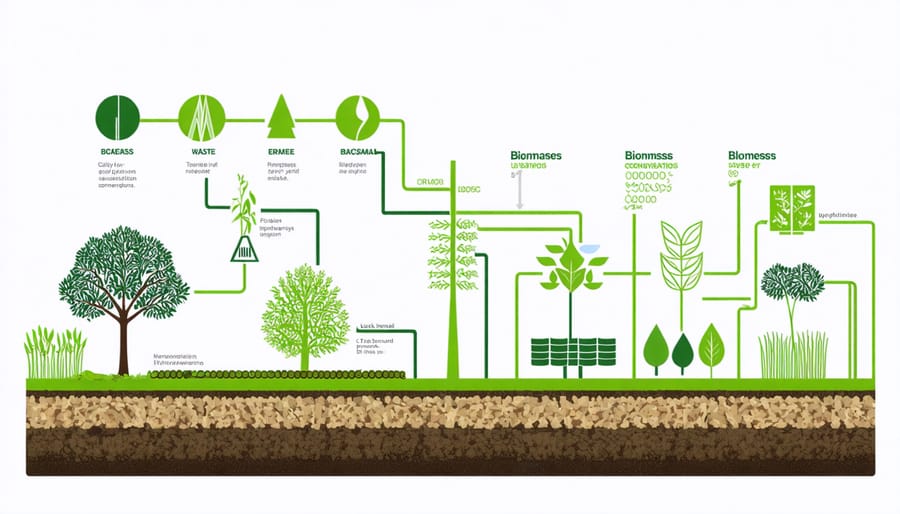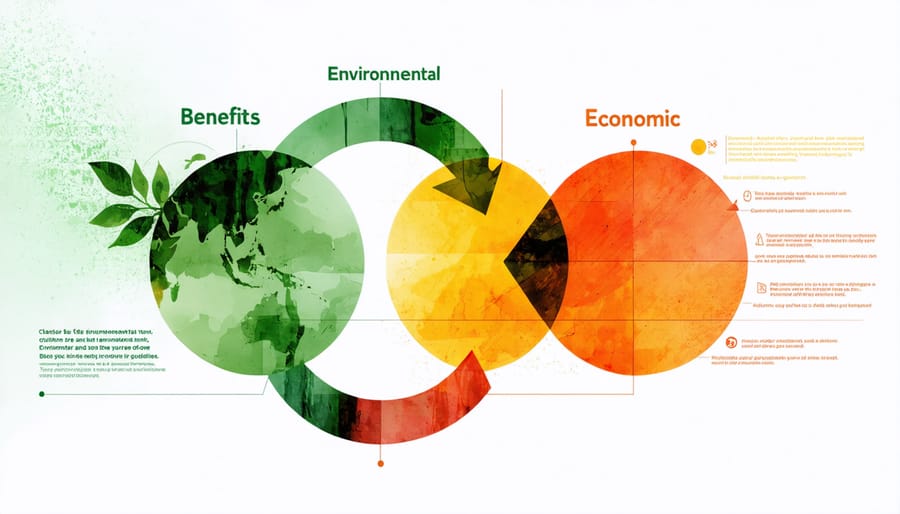Bilateral investment in bioenergy represents a transformative force reshaping Australia’s renewable energy landscape, creating unprecedented opportunities for cross-border collaboration and sustainable development. As nations worldwide accelerate their transition to clean energy, strategic partnerships between countries, institutions, and private enterprises have emerged as crucial drivers of innovation and scale in the bioenergy sector.
This powerful investment approach combines the strengths of multiple stakeholders, leveraging shared expertise, resources, and market access to accelerate project development and minimize risks. From Queensland’s sugarcane-to-biofuel initiatives to Victoria’s waste-to-energy facilities, bilateral investments are catalyzing projects that might otherwise remain unrealized, while simultaneously addressing climate challenges and energy security concerns.
The impact extends beyond mere financial returns – these partnerships foster technology transfer, create local jobs, and establish sustainable supply chains that benefit both participating nations. For Australian businesses and communities, this collaborative approach opens doors to international markets while attracting global expertise and capital to domestic projects, creating a virtuous cycle of growth and innovation in the renewable energy sector.
This proven model of international cooperation demonstrates how shared investment can accelerate the transition to sustainable energy solutions while generating substantial economic benefits for all participating stakeholders.
The Power of Two-Way Investment in Bioenergy
Public-Private Partnerships
Public-private partnerships have emerged as powerful catalysts for advancing bioenergy projects across Australia. These collaborative arrangements combine government expertise and regulatory support with private sector innovation and capital, creating robust frameworks for sustainable energy development.
The Clean Energy Finance Corporation (CEFC) exemplifies this approach, partnering with private investors to accelerate the deployment of renewable energy solutions. Through these partnerships, regional communities benefit from new infrastructure while businesses gain access to government support and risk-sharing mechanisms.
Notable success stories include the partnership between the Queensland government and major agricultural businesses, which established several biomass processing facilities. These facilities now convert agricultural waste into clean energy, supporting both farming communities and renewable energy goals.
These partnerships typically operate through shared investment models, where government agencies provide initial funding or loan guarantees, while private companies contribute technical expertise and operational management. This arrangement has proven particularly effective in rural areas, where bioenergy projects create local jobs while advancing Australia’s renewable energy targets.
The future of public-private partnerships in bioenergy looks promising, with new models emerging that emphasize community involvement and environmental stewardship alongside economic returns.

Cross-Border Investment Opportunities
The growing momentum in bioenergy development has created exciting cross-border investment opportunities between Australia and its international partners. Leading the charge are joint ventures between Australian agricultural businesses and European technology providers, combining our nation’s abundant biomass resources with cutting-edge conversion technologies.
Notable success stories include the partnership between Queensland sugar mills and Danish biorefinery experts, creating state-of-the-art facilities that transform agricultural waste into valuable biofuels and biochemicals. These collaborations not only bring fresh capital to local communities but also facilitate knowledge transfer and technological advancement.
Asian investors, particularly from Japan and South Korea, are increasingly drawn to Australian bioenergy projects, recognizing our stable business environment and commitment to renewable energy. These partnerships often focus on developing large-scale biomass processing facilities that serve both domestic and export markets.
Investment flows are supported by government initiatives such as the Clean Energy Finance Corporation, which provides crucial backing for international investors looking to establish bioenergy projects in Australia. This supportive framework, combined with our rich biomass resources, positions Australia as an attractive destination for global bioenergy investment.
Success Stories: Australian Bioenergy Projects

Agricultural Waste to Energy
In rural Victoria, the Goulburn Valley Agricultural Waste Initiative stands as a shining example of successful bilateral investment in bioenergy. Local farmers partnered with German technology firms to transform their agricultural waste into valuable energy resources, creating a win-win situation for both communities.
The project, launched in 2019, converts fruit and vegetable waste from the region’s orchards into biogas, powering over 2,000 homes. The German investors provided cutting-edge anaerobic digestion technology, while Australian farmers contributed land, biomass resources, and local expertise. This collaboration has reduced waste management costs for farmers by 40% while generating clean, renewable energy.
Similar success stories can be found in Queensland’s sugarcane industry, where Japanese investors have helped establish bagasse-to-energy facilities. The bilateral partnership has enabled sugar mills to become energy self-sufficient and even export excess power to the grid. Local communities benefit from new job opportunities, while international partners gain valuable experience in sustainable energy production.
These partnerships demonstrate how bilateral investment can bridge the gap between agricultural waste management and renewable energy production. The model has proven particularly effective in regional Australia, where abundant agricultural waste meets innovative international technology. For farming communities, this approach offers a sustainable solution to waste management while creating new revenue streams and supporting local energy independence.
Industrial Scale Bioenergy Facilities
Australia’s commitment to large-scale bioenergy facilities has yielded impressive results, with several landmark projects demonstrating the economic viability of bilateral investments in this sector. The Sunshine Coast’s Biomass Power Plant stands as a shining example, generating 36MW of renewable electricity while creating over 200 local jobs and processing 400,000 tonnes of sustainable biomass annually.
In Western Australia, the Albany Biomass Plant represents a successful partnership between Australian and European investors, converting agricultural waste into clean energy while supporting regional farmers with additional income streams. This $95 million facility showcases how bilateral investments can transform agricultural communities into renewable energy hubs.
The Mount Gambier Biorefinery, a joint venture between Australian and Asian investors, demonstrates the multiplier effect of bilateral investments. Beyond its primary function of converting timber waste into biofuel, the facility has sparked the development of associated industries, including specialized transport services and maintenance operations, creating an entire economic ecosystem.
These facilities haven’t just delivered clean energy – they’ve become catalysts for regional development. The Victorian Bioenergy Hub, for instance, has attracted international expertise, fostered innovation in waste management, and established Australia as a leader in bioenergy technology. Local communities benefit from increased employment opportunities, while partner nations gain valuable operational experience and investment returns.

Environmental and Economic Benefits
Carbon Emission Reduction
Bilateral investments have played a pivotal role in driving significant carbon emission reductions across Australia’s energy landscape. Through strategic partnerships between public and private sectors, these investments have enabled the deployment of cutting-edge bioenergy technologies that directly combat climate change. Recent projects have demonstrated remarkable success, with joint ventures in Queensland’s sugarcane industry reducing emissions by up to 90% compared to conventional fossil fuel operations.
The measurable impact of these investments extends beyond direct emission reductions. In Victoria, bilateral funding arrangements have supported the development of waste-to-energy facilities that not only decrease methane emissions from landfills but also generate clean electricity for local communities. These facilities prevent an estimated 50,000 tonnes of CO2 equivalent from entering the atmosphere annually.
The ripple effect of bilateral investments in emission reduction technologies has created positive outcomes across multiple sectors. Agricultural projects have seen improved soil carbon sequestration, while industrial partnerships have led to the adoption of cleaner production processes. The collaborative nature of these investments has also fostered knowledge sharing and technology transfer, accelerating the adoption of low-carbon solutions throughout the supply chain.
Looking forward, bilateral investment frameworks continue to set ambitious targets for emission reductions, with many projects aiming for carbon neutrality by 2030. This commitment demonstrates the powerful role of shared investment in driving Australia’s sustainable energy future.
Job Creation and Economic Growth
Bilateral investment in bioenergy creates significant economic ripple effects throughout participating nations. When countries collaborate on bioenergy projects, they generate employment opportunities across multiple sectors, from agricultural development to technical operations and research positions. In Australia, these investments have already created thousands of jobs in regional communities, particularly in areas where traditional industries are transitioning to more sustainable practices.
The multiplier effect of bilateral investments extends beyond direct employment. For every job created in bioenergy facilities, approximately three additional positions emerge in supporting industries such as transportation, maintenance, and supply chain management. These partnerships also foster sustainable growth opportunities through knowledge sharing and technology transfer between partner nations.
Local economies benefit substantially from increased economic activity, with new businesses emerging to service bioenergy facilities and their workforce. The injection of foreign capital through bilateral agreements helps fund infrastructure development, research initiatives, and skills training programs. This creates a positive cycle of economic growth, where initial investments lead to increased local capacity, attracting further investment and creating additional employment opportunities.
The economic benefits are particularly pronounced in rural and regional areas, where bioenergy projects often become anchor employers and catalysts for community development.
Implementation Strategies
Risk Management
Successful bilateral investment in bioenergy projects requires robust risk management strategies to protect stakeholders and ensure project viability. Common challenges include regulatory changes, currency fluctuations, and technological uncertainties. However, these risks can be effectively mitigated through careful planning and strategic partnerships.
Australian investors and their international counterparts typically address these challenges through comprehensive due diligence processes and structured agreements. Risk-sharing mechanisms, such as performance guarantees and insurance products, provide additional layers of protection. Many successful projects incorporate staged investment approaches, allowing partners to test and validate their collaboration before committing larger resources.
Environmental and social impact assessments are particularly crucial in the bioenergy sector. Leading organizations implement monitoring systems to ensure compliance with both Australian and international standards. This proactive approach helps prevent potential issues and maintains strong community support.
Local expertise plays a vital role in risk mitigation. Partnering with established Australian firms that understand the domestic market dynamics and regulatory framework has proven successful for many international investors. Regular stakeholder engagement and transparent communication channels further strengthen these partnerships and help address concerns before they escalate into significant problems.
Investment Framework Development
Developing a robust investment framework is crucial for successful bilateral investment in bioenergy projects. The process begins with establishing clear objectives that align with both parties’ sustainability goals and financial expectations. A well-structured framework should include comprehensive risk assessment protocols, focusing on environmental, technical, and market-related factors specific to the Australian context.
Key components of an effective bilateral investment framework include transparent governance mechanisms, detailed project evaluation criteria, and flexible funding structures that can accommodate various scales of bioenergy initiatives. Partners should establish clear communication channels and reporting protocols to ensure smooth collaboration throughout the project lifecycle.
The framework should also incorporate sustainability metrics and performance indicators that reflect both environmental and economic outcomes. This includes measuring carbon emission reductions, renewable energy generation capacity, and local economic benefits. Regular review mechanisms help ensure the framework remains adaptive and responsive to changing market conditions.
Success stories from regional Australia demonstrate that frameworks work best when they include provisions for knowledge sharing and technology transfer between partners. Including local community engagement strategies and Indigenous consultation processes has proven particularly effective in ensuring project longevity and social acceptance.
For maximum impact, the framework should outline clear exit strategies and dispute resolution mechanisms while maintaining focus on long-term sustainability goals and mutual benefits for all stakeholders.
Bilateral investment stands as a cornerstone of sustainable economic growth and international cooperation in the bioenergy sector. As we look to the future, the importance of these cross-border partnerships continues to grow, particularly in addressing global climate challenges and advancing renewable energy solutions.
Australia’s experience demonstrates how bilateral investment can accelerate the transition to sustainable energy while creating economic opportunities for both investing and receiving nations. The success stories we’ve witnessed in recent years, from large-scale biomass facilities to innovative waste-to-energy projects, highlight the transformative power of collaborative investment approaches.
Looking ahead, bilateral investment in bioenergy is expected to play an even more crucial role. Emerging technologies, coupled with increasing environmental awareness and supportive policy frameworks, create fertile ground for future investment opportunities. The Asia-Pacific region, in particular, shows tremendous potential for growth, with Australia positioned as a key player in facilitating and benefiting from these investments.
For businesses and policymakers alike, the message is clear: bilateral investment in bioenergy represents not just a financial opportunity, but a pathway to sustainable development. By fostering these international partnerships, we can accelerate innovation, share expertise, and create lasting positive impact for our communities and the environment.
As we move forward, the success of bilateral investment will depend on maintaining strong international relationships, developing clear regulatory frameworks, and continuing to demonstrate the commercial viability of bioenergy projects. The future of sustainable energy is collaborative, and bilateral investment will remain a vital tool in achieving our shared environmental and economic goals.

